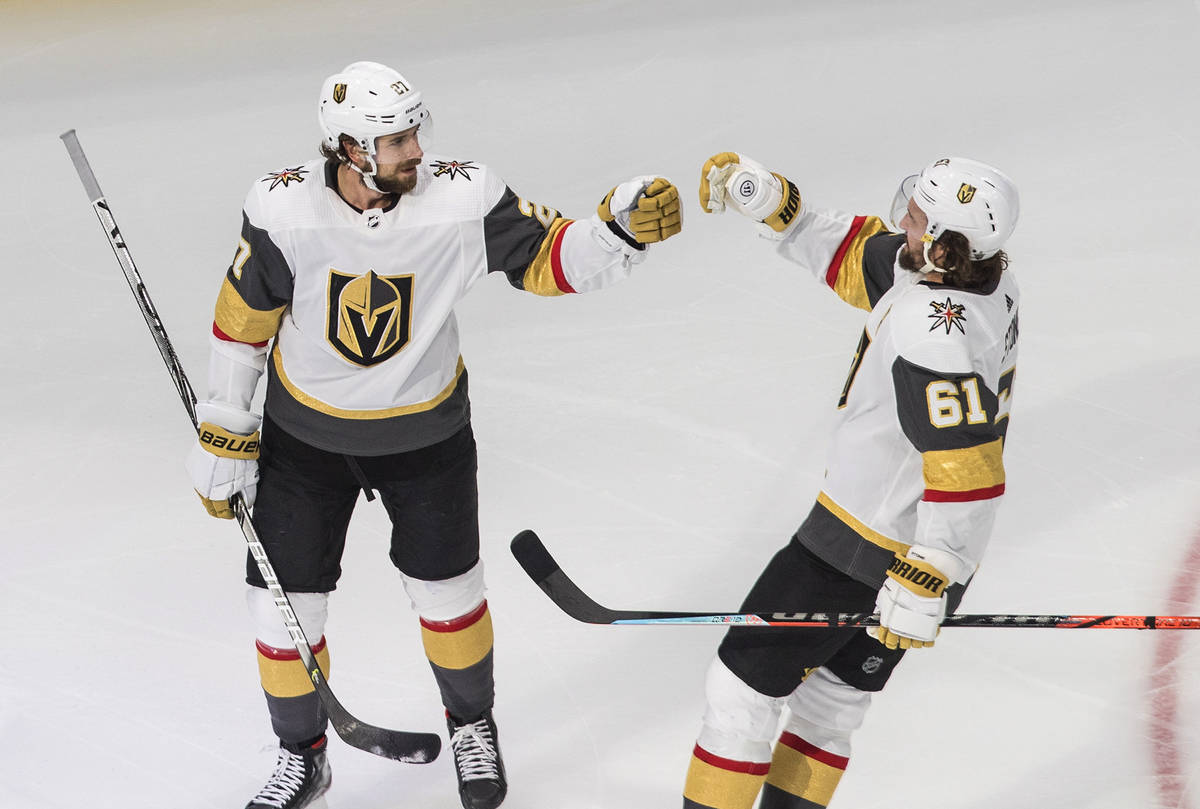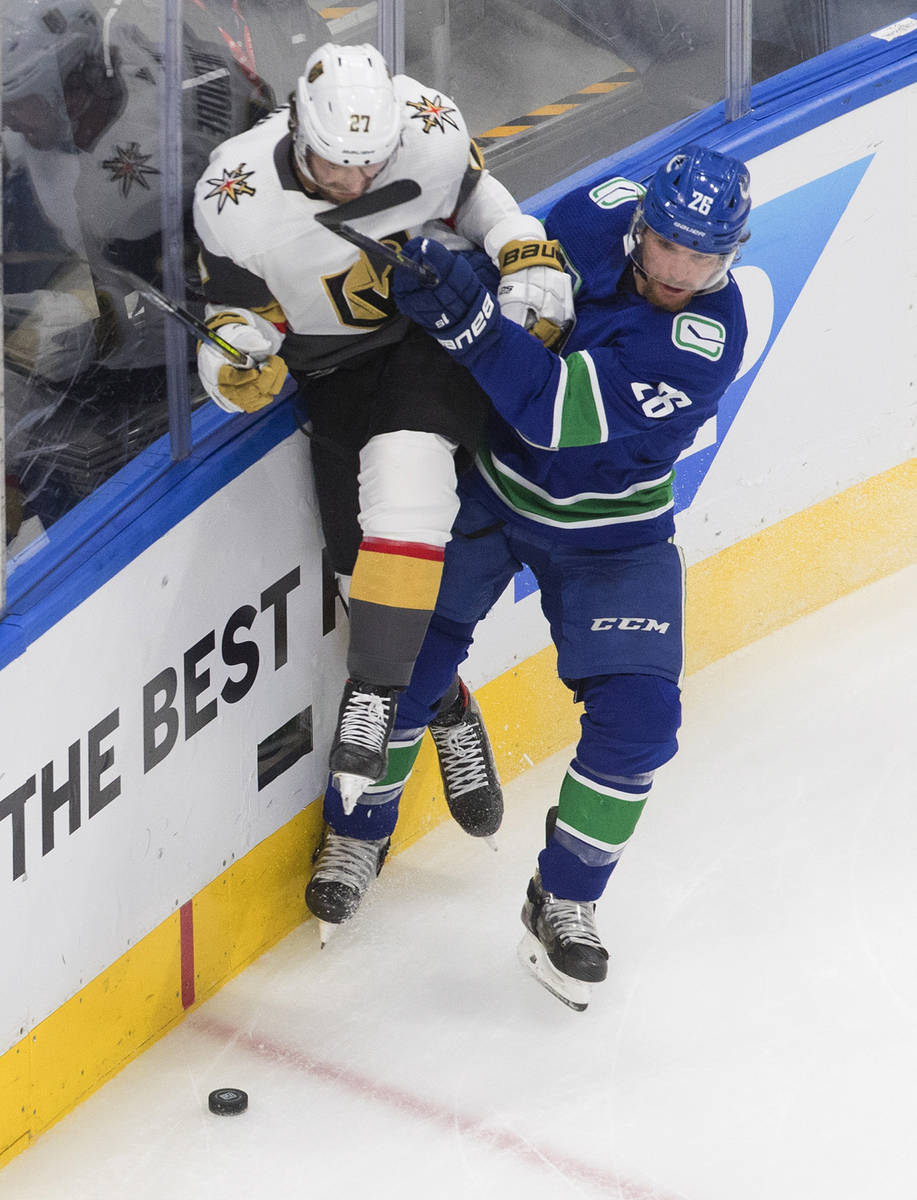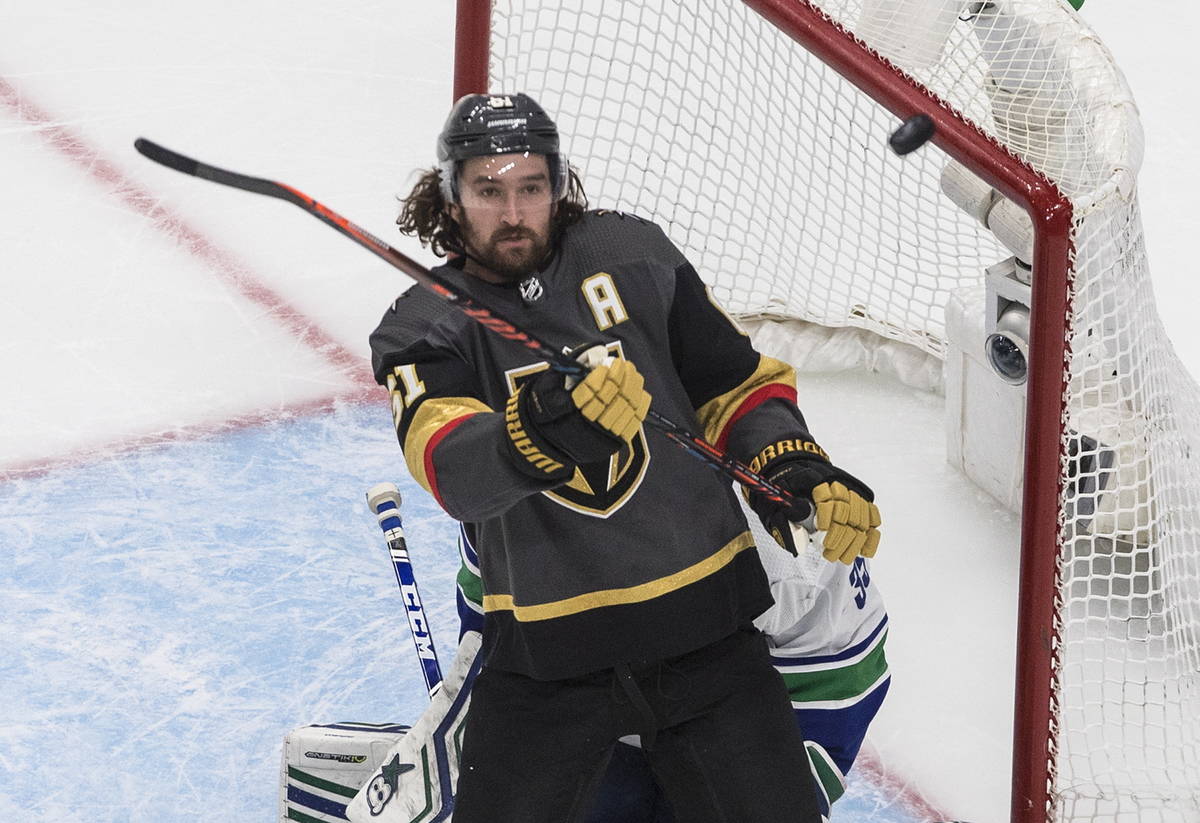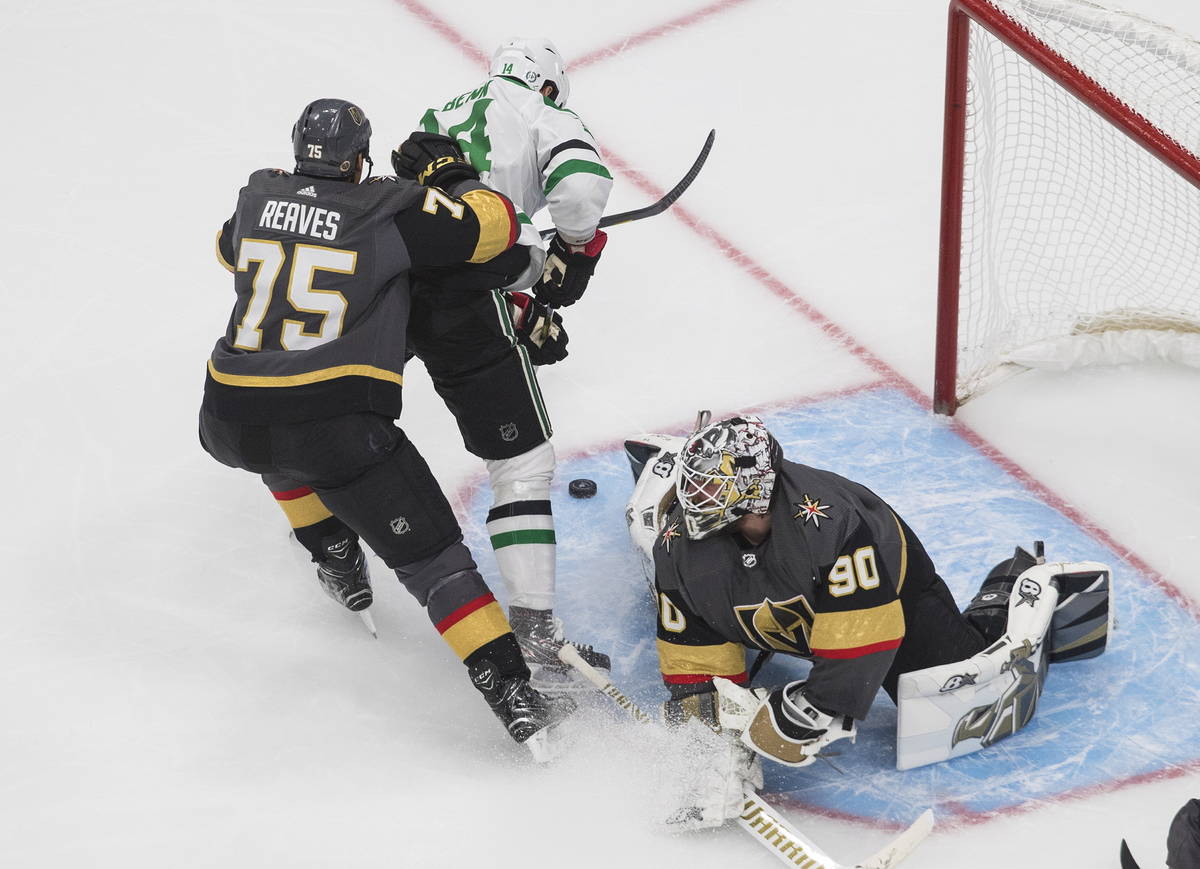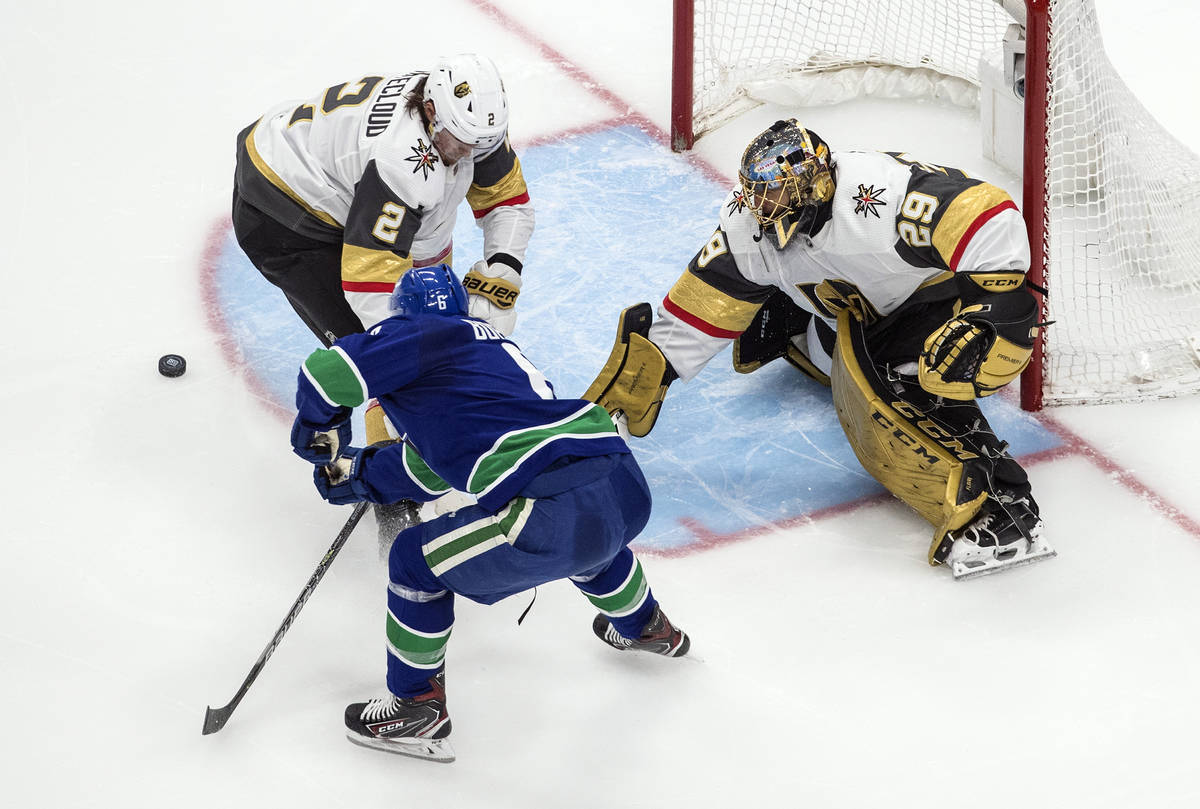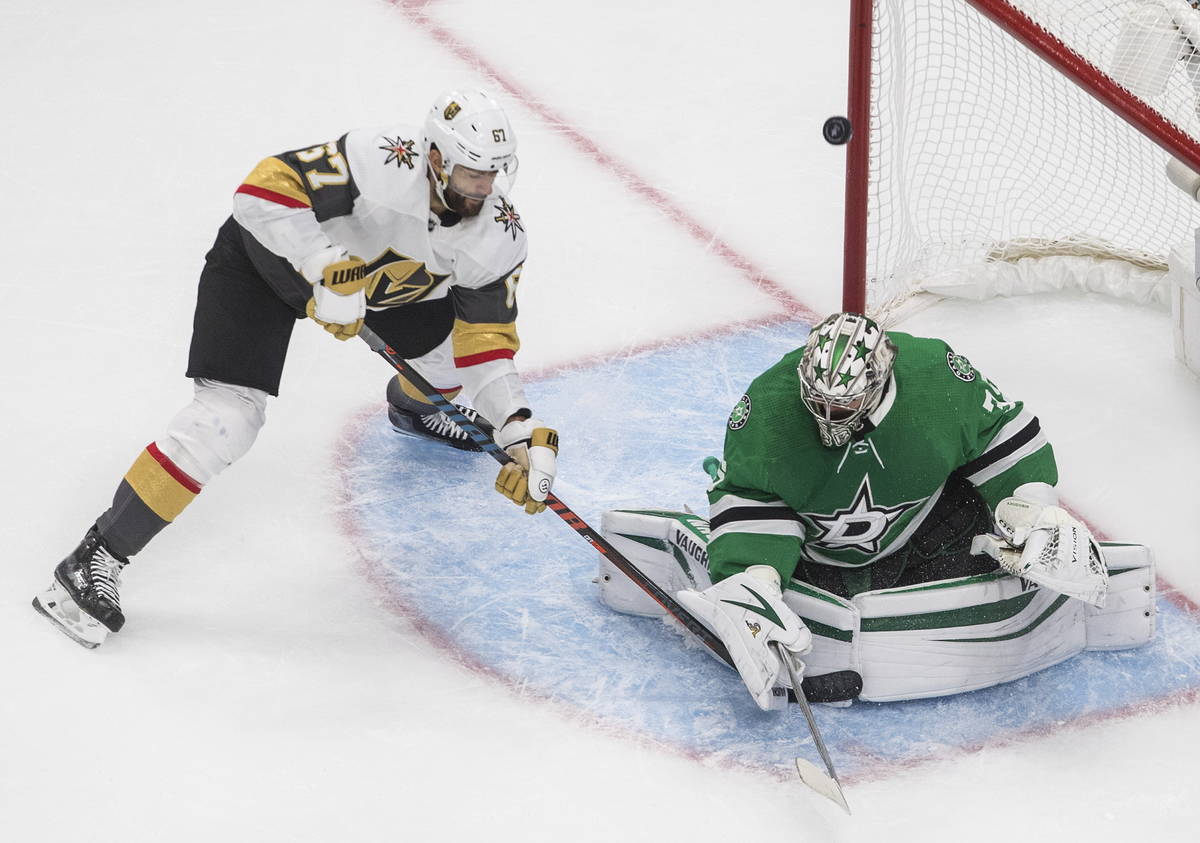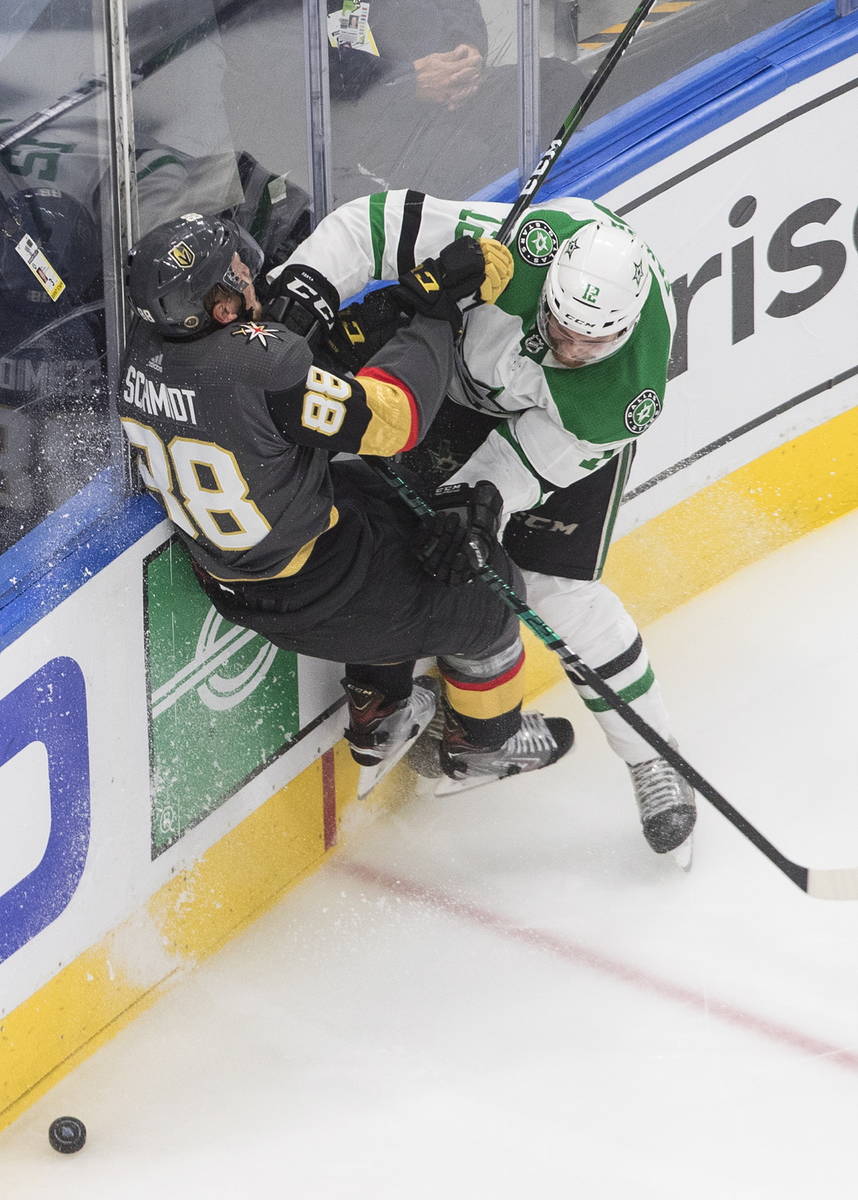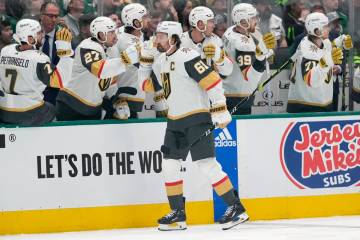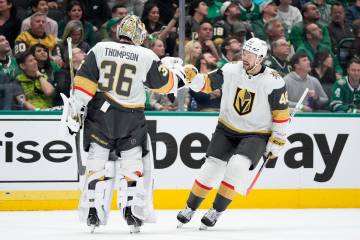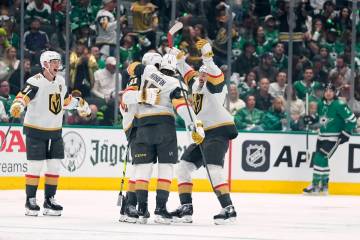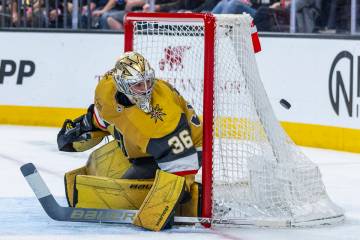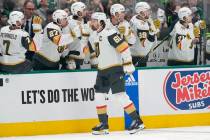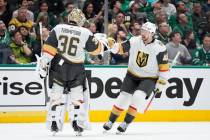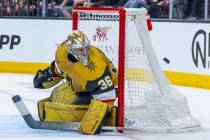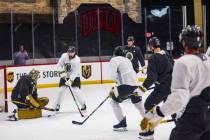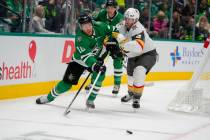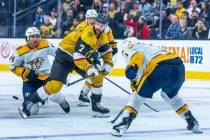Grading the Golden Knights in the postseason
Shea Theodore used an “F” word last week when describing the Golden Knights’ season: failure.
The Knights aren’t playing for the Stanley Cup. That isn’t acceptable to a franchise that has shot expectations sky high in its three NHL seasons.
“Anything that falls short of that is a failure,” Theodore said. “Our expectation was to win the Cup. It’s tough to just fall short the way we did, but that’s the reality.”
The Knights finished 12-8 in the postseason and were seven wins short of their goal. Their run was ended by the Dallas Stars five games into the Western Conference Final.
Here’s a look at the team’s performance during that stretch, broken down by position group and player:
Forwards
(Listed in order of points)
Right wing Mark Stone — The Knights’ emotional leader was one of the few forwards who increased his shooting percentage in the postseason. He also played through pain in the final two games after blocking a shot with his foot.
Right wing Reilly Smith — He was one of the NHL’s best all-around players through two rounds. He slumped in the conference final with one goal.
Right wing Alex Tuch — He scored as many goals in the playoffs (eight) as he did in the regular season. A healthier and slimmer Tuch made a huge impact.
Center William Karlsson — He played more than any other forward because of how valuable he is in all situations. But he had two points in his final eight games.
Left wing Jonathan Marchessault — The franchise’s all-time leader in points had two — and no goals — in the final 11 games. His shooting percentage in the playoffs (5.3) was half his career mark (10.6).
Center Paul Stastny — His offensive production (nine points) wasn’t huge, but the savvy veteran still did a lot of subtle things.
Left wing Max Pacioretty — The Knights’ leading scorer in the regular season suffered an early setback with a training camp injury. He never returned to top form and finished on an eight-game goal drought.
Center/right wing Nicolas Roy — He acquitted himself well in his first postseason. Eight points is more than respectable for a bottom-six rookie.
Left wing/center Chandler Stephenson — He bounced around the lineup, playing everything from first-line left wing to fourth-line center. That versatility is why the pending restricted free agent probably will be back.
Left wing/center Nick Cousins — He was noticeable early but scratched three times in the final six games.
Right wing Ryan Reaves — The bruiser was again a lightning rod for the opposition with his physical play and constant chirping. He also played a key role in the NHL players’ decision to not play for two days to bring awareness to racial injustice.
Left wing William Carrier — He set the tone almost every game with the rest of the fourth line. Reaves (32.05) and Carrier (29.51) finished third and sixth in hits per 60 minutes in the postseason.
Left wing/center Tomas Nosek — He played only eight games, but had two goals and an assist. He’s an unrestricted free agent this offseason.
Center Patrick Brown — One goal in two games isn’t bad for a taxi-squad call-up.
Grade: 2.5 out of five sticks.
This group stopped scoring, and that’s the main reason the Knights aren’t in the Stanley Cup Final. Stastny (six) was the only forward who had more than three points in the final eight games. That’s simply not good enough. The forwards still receive a decent grade because the Knights were tied for the second-best offense through 12 playoff games.
Defensemen
(Listed in order of points)
Shea Theodore — Most Stanley Cup winners have an elite No. 1 defenseman on their roster. Theodore showed he could be that guy with a 19-point performance.
Nate Schmidt — He had turnovers and miscues, but he still led the Knights in ice time, got tough matchups and scored nine points.
Alec Martinez — He’s been an impressive acquisition. Along with playing in all situations, he’s helped Theodore flourish.
Brayden McNabb — He wants some plays and penalties back. That comes with the territory because he often defends the opposition’s top players.
Zach Whitecloud — The rookie scored his first two goals and led the team in penalty-kill minutes. His toughness was commendable.
Nick Holden — He continued to provide steady minutes in his third-pair role next to Whitecloud.
Jon Merrill — He played one game and got an assist. Next up? Unrestricted free agency.
Grade: Four out of five pucks.
Did the blue line have some sloppy giveaways and mistakes late in the postseason? Sure. But that happens against good teams. They were hurt by the Knights’ scoring slump against Dallas. Overall, this well-rounded group was effective at both ends and showed it can handle itself during a deep playoff run.
Goaltenders
Robin Lehner — He has two more shutouts in the postseason than any other goaltender. His 1.99 goals-against average in the playoffs was the lowest in team history.
Marc-Andre Fleury — One clunker against St. Louis aside, he was outstanding. Fleury had a .940 save percentage in his final three starts and won two of them.
Grade: Four out of five nets.
The goaltending situation received a lot of attention in the postseason. Ultimately, it didn’t determine the team’s fate. Both goalies played well enough to win almost every night. The Knights allowed more than three goals just three times in 20 games.
Special teams
Power play — At 18.2 percent, the Knights scored slightly less on the power play in the postseason than the regular season (22 percent). They struggled more as the postseason went on, scoring on four of their final 32 opportunities.
Penalty kill — The penalty kill experienced a remarkable turnaround before crashing at the finish line. The Knights, 27th on the PK in the regular season, ranked sixth in the playoffs at 85.5 percent. That progress was soured after they allowed three power-play goals in their final five kills.
Grade: Three out of five penalty boxes.
The power play was fine, and the Knights made subtle adjustments to throw different looks at opponents. The penalty killing was far more remarkable. Despite the grim finish, the improvement could prove massive next season.
Contact Ben Gotz at bgotz@reviewjournal.com. Follow @BenSGotz on Twitter.



